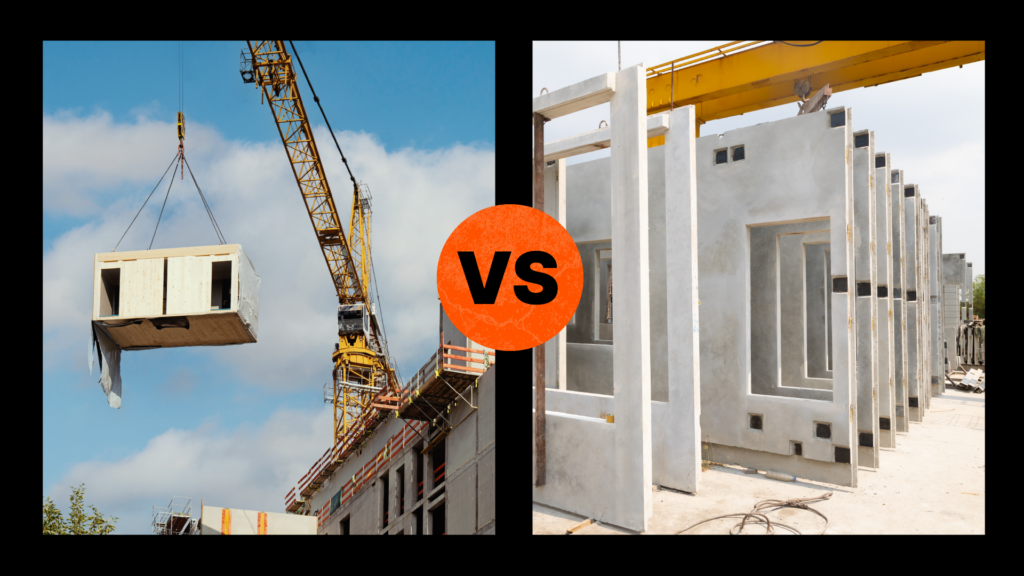— 5 min read
A Contractor’s Guide to AIA Billing
Last Updated Jun 11, 2024
Last Updated Jun 11, 2024

AIA billing is a standardized process for submitting payment applications in the construction industry, commonly involving forms G702 and G703. Created by the AIA Contracts Documents program, these templates have achieved an industry-standard status, to the point where their format is widely used even in non-AIA-branded documents.
This guide will examine the nuances of AIA billing, discuss how technology has influenced document customization and address common challenges in preparation and submission.
Table of contents
Key Documents in AIA Billing
Contractors working under projects that involve AIA A201 general conditions are typically expected to employ the G702 and G703 forms for their payment applications.
G702: Application and Certificate for Payment
The AIA G702 is the payment application form that summarizes the request, including:
- Original contract value
- Change orders
- Amounts billed previously
- Current billing amount
- Retainage
- Taxes
While customization is possible, this form is often kept unchanged due to its straightforward nature. Adjustments are made depending on the project’s requirements, such as when the need for an architect’s approval is waived in design-build scenarios.
G703: Continuation Sheet
The AIA G703 is a continuation sheet to G702 (based on the schedule of values) that presents a breakdown of the summarized totals in the G702, often tailored to match how the project was bid. This alignment with project specifics facilitates the approval process and presents a cohesive narrative of the billing's basis. The format of the G703 tends to remain consistent, but the content will vary with each project to represent the unique milestones or scheduled values.
Supporting Documentation
In addition to the primary AIA billing forms G702 and G703, the payment application process often requires supplementary documentation to substantiate the amounts requested. These additional documents serve to reinforce and provide clarity to the information presented in the main billing forms, ensuring a thorough and transparent billing cycle.
The type of supplementary documentation can vary based on the project, the contract terms, and the preferences of the clients and architects. However, there are common types of additional documentation that are frequently included:
- Change order log: This log provides a historical record of all approved and pending change orders related to the contract. It is critical to keep this log updated and accurate to avoid confusion or delays in payment.
- Insurance certificates: To ensure ongoing compliance with project requirements, updated certificates of insurance may be included with the billing package.
- Stored material invoices: When billing for materials not yet installed but stored on-site or at an approved off-site location, invoices or other proof of purchase may be required to substantiate the costs.
- Lien waivers or releases: Lien waivers are commonly required to ensure that all parties acknowledge the receipt of payment and waive their right to a lien against the property for the amount paid during the billing period. AIA Contract Documents produces the G706A, although the contract documents should specify the correct template for use on the project to ensure it complies with statutory requirements.
- Photos and delivery slips: Visual evidence of work progress, as well as slips indicating the delivery of materials, can provide additional support for expenditures listed in the pay application.
- Detailed reports: Depending on the complexity of the project, detailed reports such as labor hours, equipment usage, or cost breakdown by activity can be included to offer an in-depth view of line items.
Common Concerns in AIA Billing
Customization of AIA Forms
Technological advancements have introduced more flexibility in how contractors use AIA billing documents. Modern construction invoicing software allows contractors to push financial data from budgets to invoices, tailoring pay app information or consolidating details into broader categories.
However, contractors should take a judicious approach to customizing standard form documents. Combining categories, especially regarding retainage, can lead to rounding discrepancies and potentially complicate the billing process.
The ability to customize documents is increasingly valued, and as such, more contractors are asking whether certain columns can be hidden or information can be excluded to streamline the billing process. Tools that offer dynamic updates and integration with billing documents are preferred over traditional methods, such as spreadsheet programs, which require frequent manual updates and can delay the billing process.
Before customizing or tailoring AIA documents to suit their purpose, contractors should get approval in writing from the party they are contracted with. Often, a pencil requisition is used in advance of the formal payment application to get preliminary confirmation of the billing format and itemized list of expenses.
Notarization
AIA documents typically require notarization, which can especially pose a challenge during times of remote work. Flexibility and understanding within the industry have led to temporary adjustments, but the necessity of notarization remains a point of consideration for contractors.
Many construction companies will ensure that their staff — particularly those in the accounting department — are notaries, so document notarization can be done in-house.
Legal Obligations
Contractors often face a dilemma between following legal requirements and adhering to common industry practices. While official AIA documents are the norm, owners and architects often accept forms without the stamp, provided they replicate the standard format. Nonetheless, industry practices do not negate the legal obligation that may arise in contracts requiring official AIA documentation.
Change Orders
When completing AIA billing forms, the change order section often presents difficulties. It's important to include only approved change orders for the billing period and to ensure the dates align with the pay application time period. Including pending change orders or those outside the billing period can muddy the application, leading to rejections and payment delays.
Understanding where clients prefer change order details, whether listed separately or built into existing costs, is fundamental to avoiding billing errors and delays in payment. When in doubt, defer to the contract.
Stay updated on what’s happening in construction.
Subscribe to Blueprint, Procore’s free construction newsletter, to get content from industry experts delivered straight to your inbox.

Billing for Timely Payment
AIA billing, with its standardized G702 and G703 forms, is integral to the construction industry’s financial operations. While there is a trend towards personalizing these forms to fit specific project needs, understanding their standard usage and being mindful of the balance between legal requirements and industry practices is vital.
Contractors should leverage technology to streamline billing processes, but never at the expense of accuracy and adherence to contractual obligations. With careful attention to detail and a clear understanding of the nuances of AIA billing, contractors can ensure timely and proper compensation for their work.
Was this article helpful?
Thank you for your submission.
94%
6%
You voted that this article was . Was this a mistake? If so, change your vote here.
Scroll less, learn more about construction.
Subscribe to The Blueprint, Procore’s construction newsletter, to get content from industry experts delivered straight to your inbox.
By clicking this button, you agree to our Privacy Notice and Terms of Service.
Categories:
Tags:
Written by
Brittney Abell
12 articles
Brittney Abell joined Procore after 6 years as an accounting manager for a commercial general contractor, overseeing accounts payable and receivable. Before that, she worked as a contract administrator for an architecture & design firm for 6 years. She has worked on a variety of building projects, including travel stops, restaurants, hotels, and retail warehouses raging from $2M to $20M. She lives in Louisville, Kentucky
View profileKristen Frisa
67 articles
Kristen Frisa is a contributing writer for Procore. She also contributes to a variety of industry publications as a freelance writer focused on finance and construction technology. Kristen holds a Bachelor of Arts in Philosophy and History from Western University, with a post-graduate certificate in journalism from Sheridan College. She lives in Ontario, Canada.
View profileExplore more helpful resources

Mission Critical Construction: Strategies for Success
Mission critical construction involves building structures whose functions cannot afford to fail, as any disruptions can lead to significant consequences for society. Keeping data centers, hospitals, power plants and other...

Modular Construction and MEP: A Collaborative Pairing
In an age of supply chain disruptions, workforce shortages, and rising material costs, off-site construction — including modular construction methods and prefabricated materials — is surfacing as a multipurpose solution....

Connected Construction: Transforming the Industry Through Integration
Construction projects are becoming increasingly complex, so companies need to innovate to accurately and profitably complete these modern structures. Connected construction — using technology and data to improve communication, processes...

Off-Site Construction: Prefab vs. Modular
As the construction world becomes ever more competitive, deadlines get tighter and the margin for error gets slimmer, project owners around the world are always looking for an edge. Thanks...